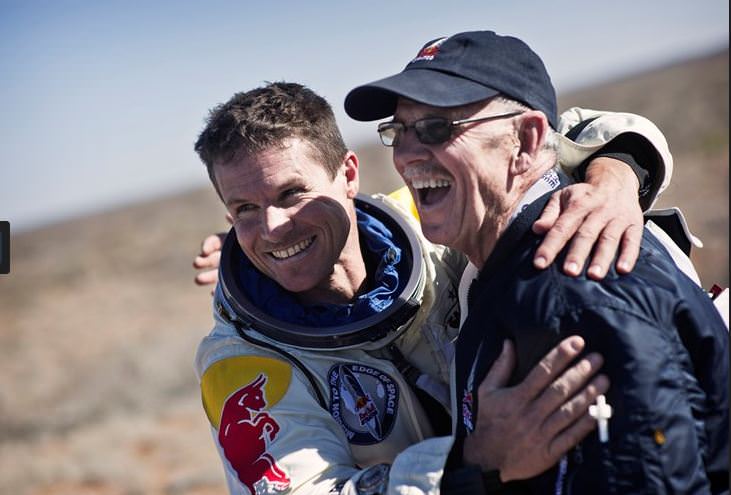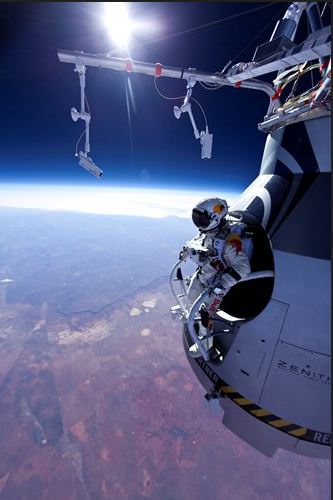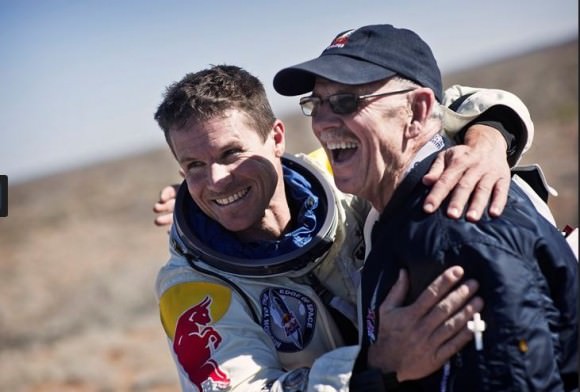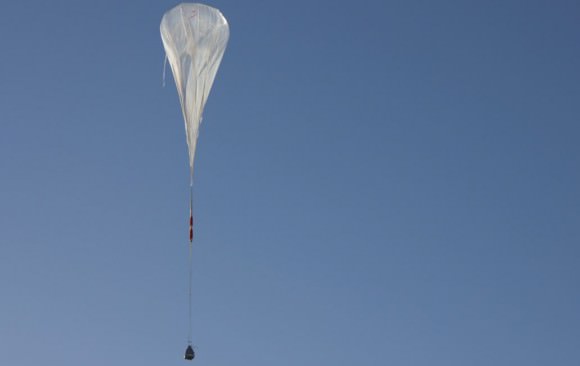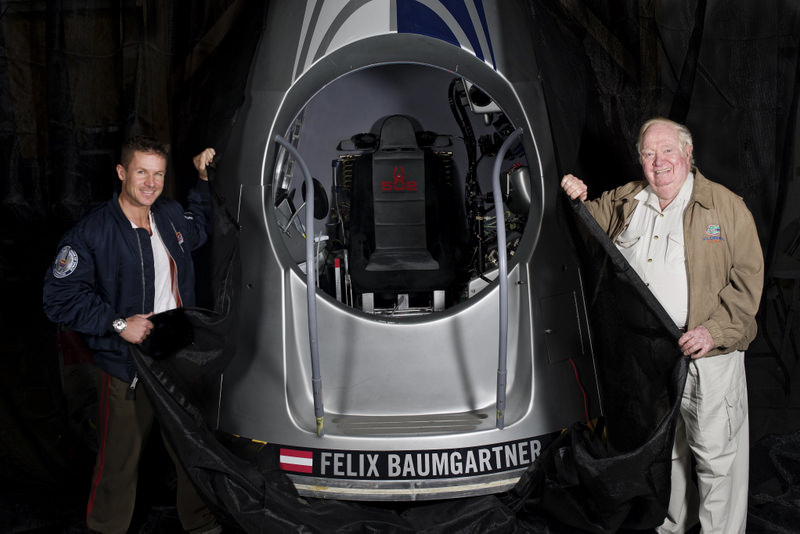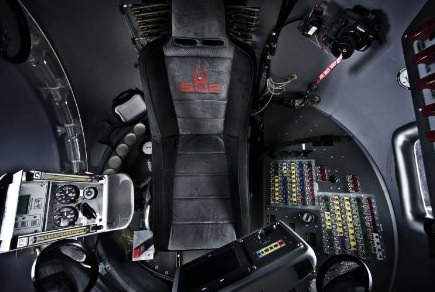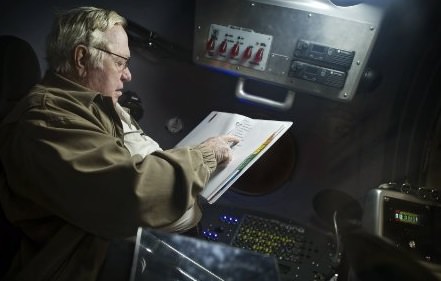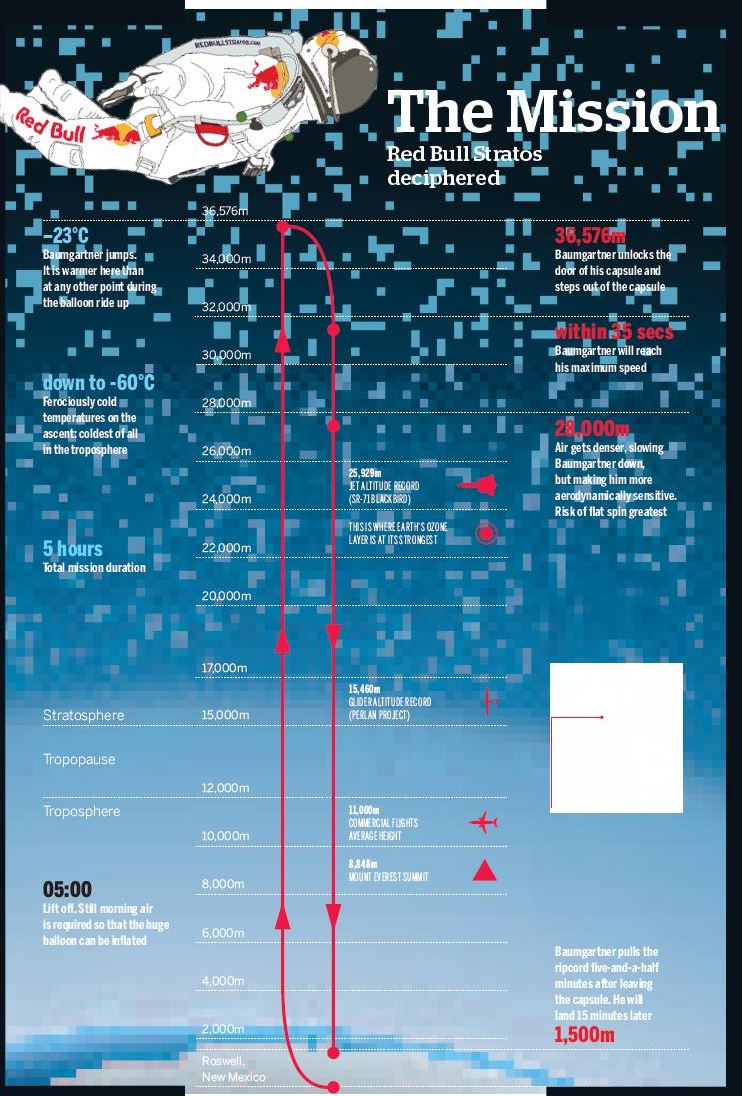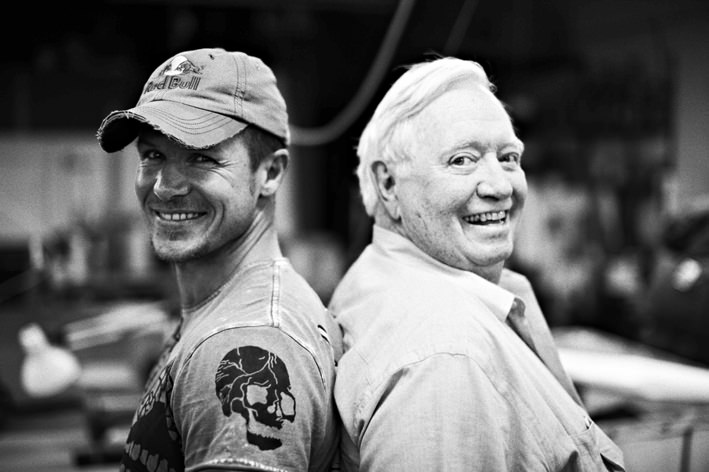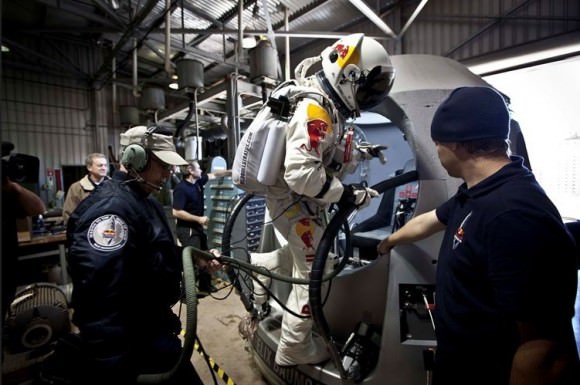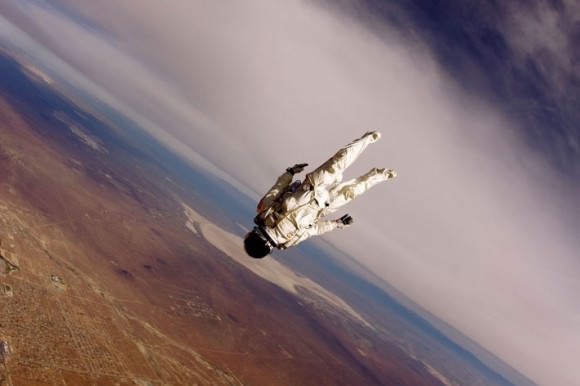Sometime this summer, Austrian skydiver Felix Baumgartner will leap from the edge of space, attempting to not only break the sound barrier with his body, but also break the record for the longest freefall. As no one has successfully jumped from this height before, it’s uncertain what the highest supersonic freefall in history will look or feel like. This animated video put out by the Red Bull Stratos team provides a sense of what to expect during the attempt.
“After years of training with my team of dedicated Red Bull Stratos experts, I’ll be going on a journey that no one has ever done,” Baumgartner told Universe Today in 2010 in an email message. “If I succeed, I will be the first person to break the sound barrier, alone. That will be a record for all eternity. As such, a piece of me will become immortal. That excites me.”
42-year-old Baumgartner is hoping to jump from nearly 37 km (23 miles, 120,000 feet) to break the current jump record held by Joe Kittinger a retired Air Force officer, who jumped from 31,500 meters (31.5 km, 19.5 miles, 102,000 ft) in 1960. Now 83, Kittinger is assisting Baumgartner in preparations for the jump.
There have been several attempts to surpass Kittinger’s record, but none have succeeded, and people have given their lives for the quest. Kittinger’s jump contributed valuable data that provided ground work for spacesuit technology and knowledge about human physiology for the US space program.
Image caption: Felix Baumgartner and life support engineer Mike Todd celebrate after landing of the first manned test flight for the Red Bull Stratos in Roswell, New Mexico on March 15, 2012. Credit: Red Bull Stratos.
If Baumgartner is successful, the Red Bull Stratos mission will break four world records: the altitude record for freefall, the distance record for longest freefall, the speed record for fastest freefall by breaking the speed of sound with the human body, and the altitude record for the highest manned balloon flight.
How fast will Baumgarter need to go to beat the speed of sound? Sound travels at different speeds through the atmosphere (as well as through different mediums), depending on atmospheric density and temperature. For example, at sea level, in average conditions of about 15 degrees C (59 degrees F), sound travels at around 1,223 kph (760 mph). But at higher altitudes, where the air is colder, sound travels more slowly.
Researchers with the Red Bull Stratos mission anticipate Baumgartner could break the sound barrier at about 30,480 meters (100,000 feet) above sea level, in temperatures of -23 to -40 C (-10 to -40 F) where sound travels at about 1,110 kph (690 mph) or roughly 304 meters per second (1,000 feet per second).
So, he’ll have to go faster than those speeds – or Mach 1 — to be supersonic.
While there is no literal “barrier,” the transition to supersonic speeds can cause problems for aircraft as transonic air movement creates disruptive shock waves and turbulence. Data obtained from Chuck Yeager’s first supersonic flight in 1947 allowed for changes in design of supersonic aircraft to avoid problems. Still, some aircraft do experience problems at that point, and going supersonic has been attributed to some air disasters.
And the human body isn’t designed for supersonic speeds.
“Our biggest concern is that we don’t know how a human unencumbered by aircraft is going to transition through this,” said the project’s Medical Director Dr. Jonathan Clark, a flight surgeon for six space shuttle missions (and husband of astronaut Laurel Clark who died in the Columbia disaster in 2003), who has researched numerous aerospace disasters. “But it’s also exactly what we’re hoping to learn, for the benefit of future space flights.”
Documents provided by the Red Bull Stratos mission say that the data obtained from the mission will be shared with the scientific community, and Clark noted that he expects long-awaited medical protocols to be established as a result.
A live webcast of the Red Bull Stratos freefall will air on the Red Bull Stratos website.

